Thursday, May 14, 2015
Thursday, April 16, 2015
Monday, April 6, 2015
Body Systems
Body Systems
The Human Body Brainpop
Integumentary System
Includes skin, hair, nails, oil and sweat glands
1st line of defense against foreign pathogens.
Oil glands in your skin produces acidic oils that stop fungi and bacteria from growing.
Finger nails and hair are made of a protein called KERATIN.
What are some functions of nails in humans, animails?
There are 3 layers of the skin are
Epidermis: outermost layer of the skin. 1st layer of protection
Dermis: contains glands and the cells that maintain the skin structure by producing elastin and collagen
Hypodermis: layer of subcutaneous fat which insulates muscles and internal organs from temperature changes.
Hair is a characteristic found in mammals.
Sweat glands help the body cool off.
Imbedded in your skin are arteries (carry blood away from your heart) and veins (carry blood to the heart).
There are millions of sensory receptors nerves in your skin that alert the brain of any movement.
The skin also is responsible for homeostasis
Skin peeling after sun burn. Goosebumps?
Dnews: goosebumps used for money?
Skeletal and Muscular SystemThese two systems help with movement and supportSkeletal System: There are 206 bones in the adult human body, around 300 in newborns.They help with supporting the body's weight and movement.
Marrow Transplant
Interactive BonesBones are connected neighboring bones by LigamentsBones connect to muscles by the use of Tendons
Three types of muscles:It acts as a involuntary muscle which we have no control of. Passing food from your throat to your stomach all the way down to your intestines uses involuntary muscles.Voluntary muscles aka skeletal muscles are moved consciously.
Skeletal muscle: moves bones has dark bands and is triangular. (voluntary)Cardiac muscle: muscle in the heart (involuntary)Smooth muscle: muscle in arteries and intestines.(involuntary)
| A very famous muscle is... |
The circulatory system is made up of the heart, blood, veins, and arteries.
It transports oxygenated blood to all cells and circulates back to the heart.
Arteries take blood Away from the heart.
Veins take blood To the heart.
How long does blood take to travel around the body?
Does the heart still beat out of the body?
Artificial Heart Video
Does the heart still beat out of the body?
Artificial Heart Video
Nervous System

Includes: Brain, Spinal Cord, and Peripheral Nerves
Your brain communicates with your body through cells called Neurons




The brain controls everything our body does; from movements of limbs to heart beats.
Nervous System
Neurons BrainPop Video
Brain on Drugs
Brain on Alcohol
Mouse Party
Brain Surgery Simulation
Includes: Brain, Spinal Cord, and Peripheral Nerves
Your brain communicates with your body through cells called Neurons
The brain controls everything our body does; from movements of limbs to heart beats.
Nervous System
Neurons BrainPop Video
Brain on Drugs
Brain on Alcohol
Mouse Party
Brain Surgery Simulation
THURSDAY, MARCH 19, 2015
Video Review for STAAR
Below you will a link to videos that will assist you with concepts you are struggling with.
Biology Videos
Tuesday, March 24, 2015
Plants
Plants
20.1 Where did they come from ????
Plants are thought to have evolved from GREEN ALGEA....Charophyceae
Likely Characteristics that came from these protist are...
a. Multicellular bodies which led to the development of cells and tissue.
b. Cells with small channels to communicate to other cells.
c. Reproduction that involves sperm fertilizing an egg.






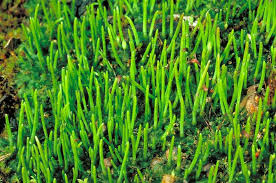
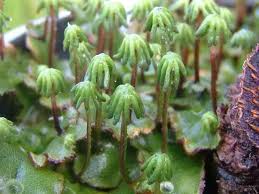


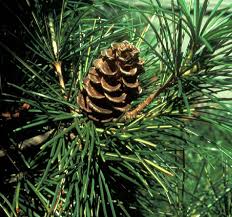

Questions
 6 Petals
6 Petals
 5 Petals
5 Petals

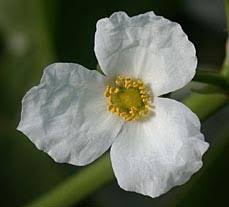
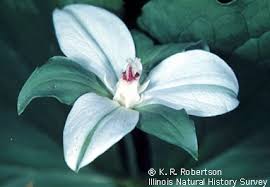



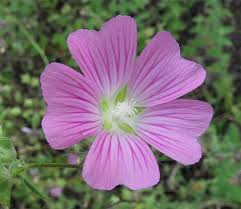
Plants can also be identified by their leaf shapes.


Arrangement of leaves

Seed Plants
22.5 PLANT HORMONES AND RESPONSES
What are hormones?
Hormones are messengers in one part of the organisms that stimulates or suppresses the activity of a cell in another part.
When are they released?
They are released in response to internal or external environmentsand regulate plant function.
Plants can respond to light, touch, gravity and Seasonal Changes.
( Light ) Phototropism: tendency of plant to grow toward light.
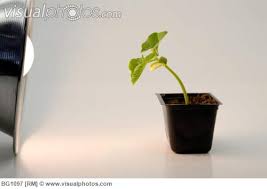

Phototropism Video
(touch) Thigmotropism: when a plant moves or grows in response to touch.


Venus flytrap can close in less than a second its native to wet and muddy areas of North and South Carolina.
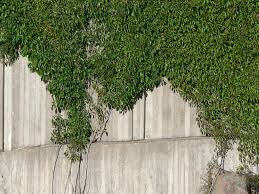

Mimosa Pudica
Thigmotropism Video
(Gravitational pull) Gravitropism: plants up or down growth in response to gravity.
Mechanism where the shoot grows up towards soil and the root down towards the soil. Regulated by a hormone called auxins.



Gravitropism Video
(lenght of day and nights) Photoperiodism: A response to the changing lengths of day and night .
Plants react to shorter days and longer nights by hibernating.
Plants, like animals, want to save energy when possible. Ex: In winter months they react by shutting down to use less energy.
Ex: LEAVES FALLING during the shorter days in the winter.
Photoperiodism Video
Plant Growth BrainPop
Likely Characteristics that came from these protist are...
a. Multicellular bodies which led to the development of cells and tissue.
b. Cells with small channels to communicate to other cells.
c. Reproduction that involves sperm fertilizing an egg.
Earliest plant fossil date back to 450 mya.
Based on the image above, what type of plants evolved most recently?
Adaptations of Land Plants
1. Retaining Moisture: Plants need to be able to retain moisture. A CUTICLE IS A WAXY, WATERPROOF LAYER THAT HELPS HOLD IN MOISTURE THROUGH TINY HOLES CALLEDSTOMATA.
2. Transport Resources: Plants must be able to get water and nutrients using a VASCULAR SYSTEM: "pipelines" that carry resources up and down to different parts of the plant.
Composition: Two networks of hollow tubes.
a. xylem: carries water and dissolved minerals UP from the roots to the rest of the plant.
b. phloem: carries the products of photosynthesis food throughout the plant.
3. Growing Upright: Plants need structure to support their weight it comes from a material called LIGNIN: Which is a material that is found in the cell walls of plant tissues.
4. Reproduce on land: Not all plants need free standing water to reproduce Pollen and seeds are adaptations that allow seed plants to reproduce free of water. Pollen is a sperm forming structure.
Male reproductive part stamen.
Female reproductive part stigma.
20.2 Classification of Plants
Seedless Plants and Seed Plants
The first kind are seedless non vascular and vascular plants.(earlistest ones).
Mosses and their relatives are seedless non-vascular plants.
Like all non-vascular plant,mosses need to live in moist environments.
Hornworts 1-4 cm Thallose Liverworts
Club mosses and ferns are seedless vascular plants.
Club moss <=20CM Fern 10-25M
Still need water for reproduction,can stand off the ground?
(tropics and subtropics.)
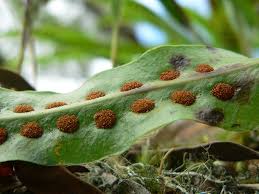

Still need water for reproduction,can stand off the ground?
(tropics and subtropics.)
ferns and mosses produce spores instead of seeds to reproduce.
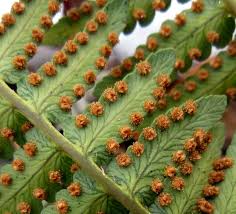
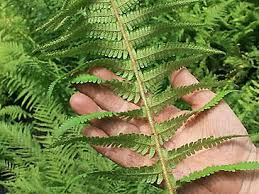
Seeded Plants
The second kind are the plants produce seeds. These are classified on whether or not seeds are enclosed in a fruit.
A seed is a storage device for a plant embryo.
They include the Cone-bearing plants and Flowering plants and have advantages over their Ancestors
How are fruits formed from flowers?
Where do pears come from?
Banana Flower

Examples BELOW.
A seed is a storage device for a plant embryo.
They include the Cone-bearing plants and Flowering plants and have advantages over their Ancestors
- Can reproduce without free standing water.
- Produce pollen which can be carried by wind or animal.
- Their seeds nourish and protect embryo.
- Seeds allow plants to disperse to new places.
How are fruits formed from flowers?
Where do pears come from?
Banana Flower
Examples BELOW.
Pine trees Papaya


Pollen carried by wind. Ginko Biloba
Pollen carried by wind. Ginko Biloba
GYMNOSPERM: seed plant whose seeds are not enclosed in fruit.
ANGIOSPERM: is a seed plant that has seeds enclosed in some type of fruit. Common name flowering plants.
Questions
- What are the habitat requirements for seedless non-vascular plants?
- What are the evolutionary advantages of vascular system?
- What are the evolutionary advantages of seeds vs spores?
20.3 Diversity of Flowering Plants
- More than 300 species
- classified as TWO types:
Monocots: Flowers that part in multiples of three.
Dicots: Flowers that part in multiples of four and five.
Plants can also be identified by their leaf shapes.
Arrangement of leaves
Seed Plants
22.5 PLANT HORMONES AND RESPONSES
What are hormones?
Hormones are messengers in one part of the organisms that stimulates or suppresses the activity of a cell in another part.
When are they released?
They are released in response to internal or external environmentsand regulate plant function.
Plants can respond to light, touch, gravity and Seasonal Changes.
( Light ) Phototropism: tendency of plant to grow toward light.
Phototropism Video
(touch) Thigmotropism: when a plant moves or grows in response to touch.
Venus flytrap can close in less than a second its native to wet and muddy areas of North and South Carolina.
Mimosa Pudica
Thigmotropism Video
Mechanism where the shoot grows up towards soil and the root down towards the soil. Regulated by a hormone called auxins.
Gravitropism Video
(lenght of day and nights) Photoperiodism: A response to the changing lengths of day and night .
Plants react to shorter days and longer nights by hibernating.
Plants, like animals, want to save energy when possible. Ex: In winter months they react by shutting down to use less energy.
Ex: LEAVES FALLING during the shorter days in the winter.
Photoperiodism Video
Plant Growth BrainPop
Subscribe to:
Comments (Atom)

